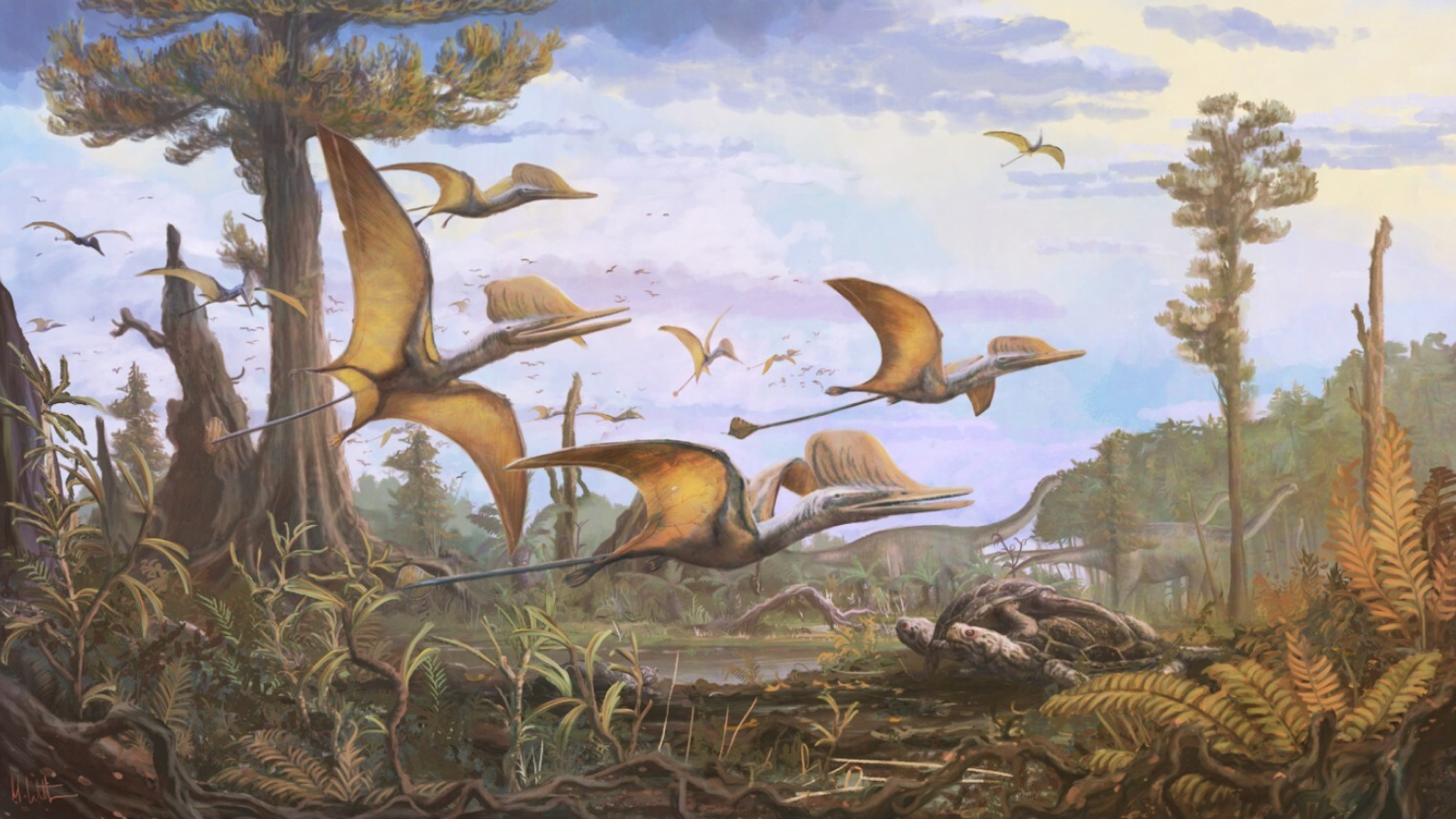Jurassic 'mist wing' fossil discovered on Scottish island could be missing link in pterosaur evolution
Surprise discovery of 168-million-year-old pterosaur in rocks on Isle of Skye will help scientists narrow down major events in the evolution of these flying reptiles.

Researchers have discovered a never-before-seen "mist wing" pterosaur on the Isle of Skye in Scotland that could be a "missing link" in the evolution of these flying reptiles. The newly discovered creature lived 168 to 166 million years ago, during the Middle Jurassic period.
The new species is called Ceoptera evansae — the genus name is inspired by the Scottish Gaelic name for the Isle of Skye, Eilean a' Cheò (or Isle of Mist) and the Latin word ptera, meaning wing.
"Ceoptera helps to narrow down the timing of several major events in the evolution of flying reptiles," Paul Barrett, a researcher at the Natural History Museum and senior author on the new study, said in a statement. "Its appearance in the Middle Jurassic of the U.K. was a complete surprise, as most of its close relatives are from China."
The discovery shows this group of flying reptiles appeared earlier than previously thought and that they quickly spread across the world, he added.
Related: Dinosaur-era frog found fossilized with belly full of eggs and was likely killed during mating
Researchers discovered the partially exposed fossilized remains of the pterosaur's shoulders, wings, legs and backbone in a large boulder near the coastline of Loch Scavaig. Due to their fragility, the team left many of the bones embedded in the rock and studied them using computed tomography (CT) scans. The researchers published their findings Feb. 5 in the Journal of Vertebrate Paleontology.
Ceoptera had several unique features that set it apart from other pterosaurs, including a pronounced depression in the region of its hip bone that holds its femur, or thigh bone; and a long, narrow, bony ridge that protrudes from the lower part of its coracoid bone — a bone in the shoulder that connects the front limbs to the sternum in the chest.
Sign up for the Live Science daily newsletter now
Get the world’s most fascinating discoveries delivered straight to your inbox.
The researchers said these unique features indicate Ceoptera is a newfound species in the controversial Darwinoptera clade — a group believed to sit between rhamphorhynchoids (the first pterosaurs) and the later pterodactyloids.
The new discovery helps scientists understand a critical "missing link" in this evolutionary history of pterosaurs.
"The time period that Ceoptera is from is one of the most important periods of pterosaur evolution, and is also one in which we have some of the fewest specimens, indicating its significance," study lead author Elizabeth Martin-Silverstone, a paleobiologist at the University of Bristol in the U.K., said in the statement.
The Middle Jurassic was a critical time in pterosaur evolution in which primitive, short-handed, long-tailed pterosaurs evolved into long-handed, short-tailed animals.
However, near-complete skeletons from this period remain elusive. The Ceoptera specimen is one of the most complete Middle Jurassic pterosaurs found to date.
The discovery shows that species within the Darwinoptera clade were more structurally diverse than previously thought. "It brings us one step closer to understanding where and when the more advanced pterosaurs evolved," Martin-Silverstone said.

Jacklin Kwan is a freelance journalist based in the United Kingdom who primarily covers science and technology stories. She graduated with a master's degree in physics from the University of Manchester, and received a Gold-Standard NCTJ diploma in Multimedia Journalism in 2021. Jacklin has written for Wired UK, Current Affairs and Science for the People.










